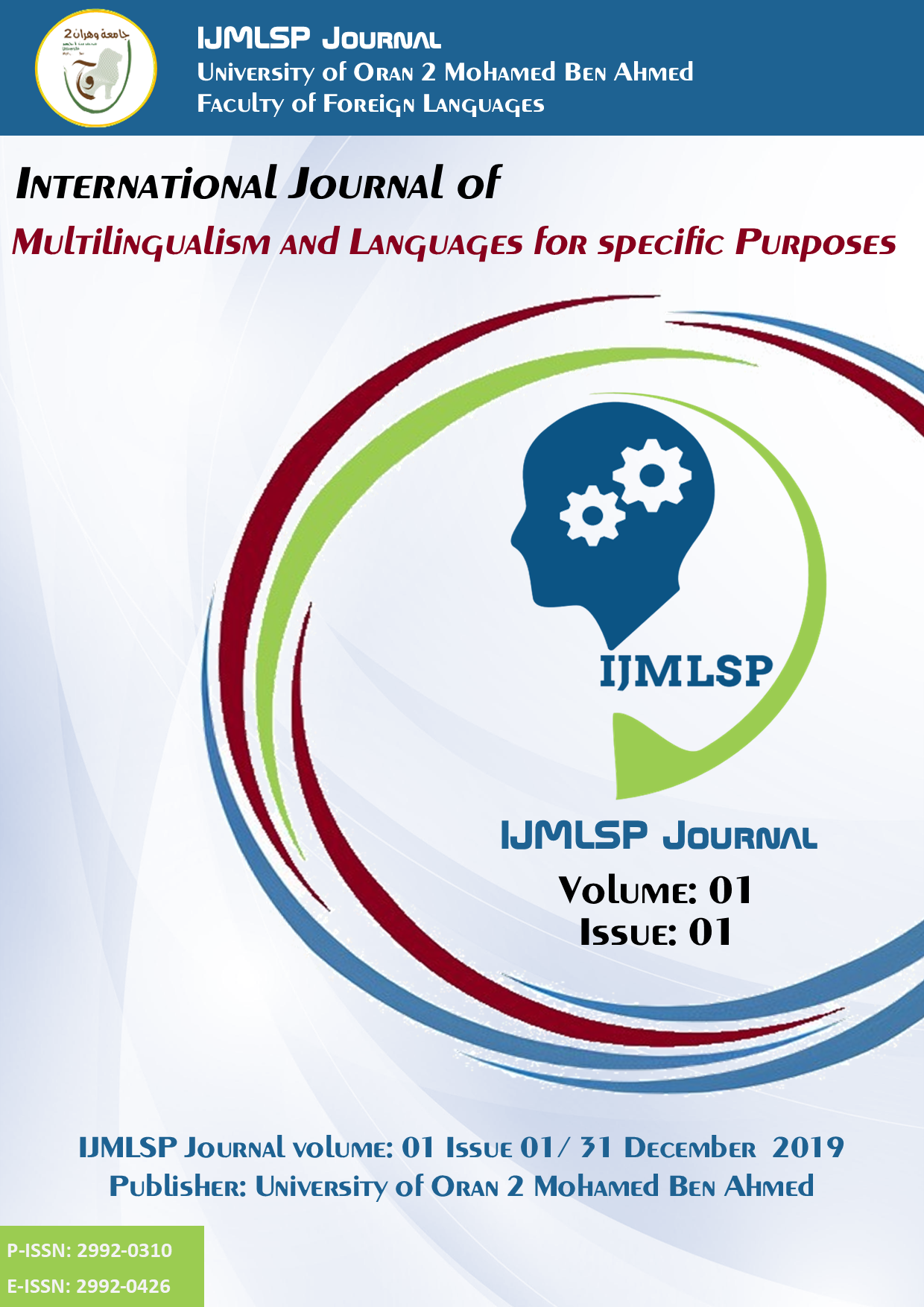Questing Better ESP Teaching/Learning for Engineering Students: The Case of Saleh Boubnider University, Constantine3
Main Article Content
Abstract
This study aimed to investigate the English language needs of engineering students at the “Ecole National Polytechnique” of Constantine in Algeria. To determine their proficiency levels and identify the specific areas in which they require language support, a descriptive analytic research design was adopted. Data was gathered through a needs analysis survey submitted to a sample of engineering students. The analysis data revealed that while most of the students had a basic level of English proficiency, they still struggled with speaking and listening and academic writing conventions. The findings suggest the necessity of a relevant ESP course that will help engineering students improve their English language skills mainly the oral ones and will enable them to succeed in their academic and professional pursuits.
Article Details
References
Ardi, M. (2009). ESP Teaching Challenges in an Indonesian Vocational Higher Institution. The English Teacher, vol 38, 131-136.
Driscoll, D. L. (2011). Introduction to Primary Research: Observations, Surveys, and Interviews. In Lowe, C & Zemliansky, P (eds), Writing spaces: readings on writing, Vol 2, Chapter 9, 153-174. Parlor Press LLC.
Dudley-Evans, T. & St-John, M.J.(1998). Developments in English for Specific Purposes: A multidisciplinary approach, Cambridge University Press.
Dudley-Evans, T. (2001). English for Specific Purposes. In M. Carter and D. Nunan(Eds.), The Cambridge Guide to Teaching English to Speakers of Other Languages, Cambridge University Press, (131-136).
Flowerdew, L. (2013). Needs Analysis and Curriculum Development in ESP. In B. Paltridge and S. Starfield(Eds), The Handbook of English for Specific Purposes, John Wiley & Sons, Inc, (325-346).
Graves, K. (1996). A Framework of Course Development Processes. In K, Graves (Eds), Teachers as Course Developers, Cambridge: Cambridge University Press (12-38).
Huckin, T. N. (1980). Review of Teaching Language as Communication by H.G, Widdowson, Language Learning,Vol. 30 (1), 209-227.
[9] Hutchinson, T, & Waters, A. (1987). English for Specific Purposes: A learner centered approach, Cambridge University Press.
Hyland, K. (2007). English for Specific Purposes: some Influences and Impacts. In G. Cummins and C. Davison (Eds.), International Handbook of Language Teaching, Springer Science Business Media, LLC, (391-402).
Kubota, R. & Chiang, L.T. (2013). Gender and Race in ESP Research. In B. Paltridge and S. Starfield (Eds.), The Handbook of English for Specific Purposes, John Wiley & Sons, Inc, 481-499.
Laborda, J.G. (2011). Revisiting Materials for Teaching Languages for Specific Purposes. 3L: The Southeast Asian Journal of English Language Studies – Vol 17(1),102 –112
Nunan, D. (1988). Syllabus Design, Oxford University Press.
Paltridge, B. & Starfield, S. (2013). The Handbook of English for Specific Purposes. John Wiley & Sons, Inc, (1-4).
Tarnopolsky, O. (2013). Developing ESP Students Speaking, Reading, Listening, and Writing Skills in Internet-Assisted Project Work. The Journal of Teaching English for Specific and Academic Purposes, Vol 1 (1): 11 –20
Zahid Javid, C. (2015). English for Specific Purposes: Role of Learner, Teachers and Teaching Methodologies. European Scientific Journal, Vol 11(20), 17-34.
